The Family Behind the Collection
For centuries the Howards were among the wealthiest and most powerful families in England. In 1603 the newly crowned King James I made Thomas Howard (1561–1626) the Earl of Suffolk. He rose to become one of the most influential figures at the Jacobean Court, and built one of the greatest houses of the age – Audley End. On Thomas’s death in 1626, his title was inherited by his eldest son Theophilus (1584–1640), while his second son, Thomas (1587–1669), became Earl of Berkshire.
From the time of James I, through the Civil War and Restoration, the Glorious Revolution and the Hanoverian Succession, both Suffolk and Berkshire branches of the Howard family played prominent roles in court and public life. In the middle of the 18th century the earldoms of Suffolk and Berkshire were united when the 10th Earl of Suffolk died without an heir. A distant cousin, Henry Bowes Howard (1686–1757), who was already 4th Earl of Berkshire, became the 11th Earl of Suffolk.
The positions held by the Howards and the circles in which they moved, as well as their public and private allegiances through four centuries of English history, helped to shape the family collection of paintings.
The American Heiress
In 1904, Marguerite Hyde Leiter (1879–1968), known as Daisy, married Henry Molyneaux Paget Howard (1877–1917), 19th Earl of Suffolk and 12th Earl of Berkshire. Once described as ‘Daisy with the violet orbs…the loveliest eyes in Washington’, she was the daughter of a multi-millionaire retail magnate and one of many high-profile American heiresses to marry into the British aristocracy at a time when the United States was becoming a world power and American tycoons were amassing vast fortunes.
Following her marriage, the new Countess came to live at the Howard family’s ancestral seat at Charlton Park in Wiltshire. After the early death of her husband in the First World War, she split her time between Britain and America.
Later, the Dowager Countess personally acquired a group of paintings from the Howard family’s ancestral collection as security on a loan she made to her son, the 20th Earl of Suffolk. On her death at the age of 89, the terms of Daisy’s will made it possible for the paintings to be given to the nation and it is these that are today known as The Suffolk Collection.
Homes of the Howards
Many of the paintings in The Suffolk Collection once hung at Charlton Park. The house came into the Howard family through Katherine Knyvett (1564–1633), 1st Countess of Suffolk. Originally built by her father, the countess altered and extended Charlton in the Jacobean style during the first years of the 17th century. Katherine later passed the house and vast estate onto her second son, Thomas, 1st Earl of Berkshire. For more than 400 years Charlton has been the principal seat of the family.
While the Countess of Suffolk was busy remodelling Charlton Park, her husband, the 1st Earl of Suffolk was building another, even larger house. Audley End in Essex was one of the greatest houses in early 17th-century England, built on the scale of a royal palace.
Audley End House passed out of the ownership of the Earls of Suffolk following the death of the 10th Earl in 1745. Though none of the paintings today in The Suffolk Collection are definitively known to have hung at Audley End, many of the people depicted in the portraits were closely connected to the house.
In addition to Charlton Park and Audley End House, at various times the Howard family owned a number of different properties across London. Paintings would have lined the walls of all of these. The combination of royal and ancestral portraits was a popular one in grand aristocratic houses and the works in The Suffolk Collection likely moved between the Howard family’s residences over the centuries. Photographs taken in the late 19th century show that by this date, many were hanging in the Long Gallery at Charlton Park.
Colourful Characters
Through the centuries, the Howard family has included many colourful, famous and occasionally infamous characters. Thomas Howard, 1st Earl of Suffolk and his wife Katherine, Countess of Suffolk both spent extravagantly on their building projects at Audley End House and Charlton Park.
After getting into debt, the Earl, who was then Lord Treasurer, began embezzling funds from the Treasury, while the Countess was involved in the sale for honours and extorted bribes from those having Treasury business with her husband.The couple were tried and convicted of corruption in 1619 but although they were sentenced to a period of imprisonment, their connections at court meant that they spent only ten days in the Tower of London.
Even more scandalously, the couple’s nephew, Edward Sackville (1591–1652), later 4th Earl of Dorset, became notorious after killing Edward Bruce, 2nd Lord Kinloss, in a duel over the famous court beauty Venetia Stanley. Considered one of the handsomest men of his day, his portrait by William Larkin is one of the gems of the Suffolk Collection, capturing the swaggering opulence of the Jacobean court.
The Curtain Master
The masterpieces of The Suffolk Collection are an important group of nine full-length portraits by the Jacobean painter William Larkin (c.1580–1619).
Until the middle of the 20th century, Larkin was identified only as ‘The Curtain Master’ and his works referred to as the ‘carpet and curtain pictures’ owing to the distinctive carpets and metallic curtains used in virtually all of his known paintings. The works by Larkin in The Suffolk Collection are of particular importance because so many connected portraits remain together.
The exact date and circumstances of the creation of the portraits are unknown but they were most likely commissioned by Katherine Knyvett, 1st Countess of Suffolk or her son, Thomas Howard, 1st Earl of Berkshire, perhaps to mark a major family occasion.
While matriarch Katherine Knyvett is the only member of the immediate family to be represented, the other sitters in the group give an insight into the friendships and more distant familial ties of the Howards. Among the paintings are portraits of a daughter-in-law of the 1st Earl and Countess of Suffolk, the sisters-in-law and mother-in-law of the 1st Earl of Berkshire, and two nephews of the 1st Earl of Suffolk.
Full-length portraits were an established convention by the time William Larkin was at work on the paintings in The Suffolk Collection. While on the continent the format was usually the preserve of royalty, in England many members of the aristocracy were depicted on this impressive scale.
Such portraits could be used in marriage negotiations, as reminders of loved ones not often seen in the flesh or, as in the case of The Suffolk Collection, to represent powerful networks of extended family and friendship.
Late Stuart Portraits
The Suffolk Collection is also home to a group of portraits depicting members of the Stuart royal family, including Charles I and II, Queen Catherine of Braganza, James, Duke of York, his second wife Mary of Modena and his daughter, Mary II. These portraits reflect the friendships and changing allegiances of the Berkshire Howards, who were prominent at the Stuart court between the Civil War and Glorious Revolution of 1688.
It was King Charles I who elevated Thomas Howard to the earldom of Berkshire and almost every one of the earl’s nine sons fought for the royalist cause during the Civil War. The Earl was also a close advisor to the future Charles II when he was Prince of Wales and went on to hold an important position in the king’s household following the Restoration of the Monarchy in 1660.
Many of the earl’s sons and daughters, their spouses and children were also leading figures at the Restoration court. Elizabeth Howard, widow of the earl’s fourth son, held a prominent position in the household of James, Duke of York, later James II, while her two daughters, Anne and Dorothy Howard served as Maids of Honour to Queen Catherine of Braganza. Philip Howard (1628–1717) seventh son of the 1st Earl of Berkshire was also a leading figure in the Duke of York’s household, before switching his allegiances to support William and Mary during the Glorious Revolution.
In total perhaps a dozen members of the Berkshire Howards were closely acquainted with Charles II and were among the ranks of those holding the most honoured positions in the households of the king, Queen Catherine and the Duke of York. Later, the Howard family’s support was divided between James II and William and Mary, which is reflected by the presence of both Jacobite and Williamite figures amongst the portraits in The Suffolk Collection.
Kenwood Connections
In the 18th century, there were several links, both familial and social, between the Howard family and the 1st Earl and Countess of Mansfield, for whom Kenwood was a favourite home.
Lady Elizabeth Murray, née Finch, 1st Countess of Mansfield, affectionately known as Lady Betty, was distantly related to Thomas Howard, 1st Earl of Suffolk. His nephew, Richard Sackville, 3rd Earl of Dorset, whose portrait by William Larkin hangs at Kenwood as part of The Suffolk Collection, was Lady Betty’s great-great-grandfather.
Closer to home, Lady Betty’s niece, Lady Charlotte Seymour, became 12th Countess of Suffolk on her marriage to Henry Howard in 1777, while Henry’s mother, Lady Mary Finch, Viscountess Andover, was also related to Lady Betty. The two women were cousins and so-called ‘bluestockings’. They moved in the same social circles, sharing a notable friend in common – the celebrated amateur artist, Mrs Mary Delany, who was a frequent visitor to Kenwood.
The Suffolk Collection at Kenwood
With one or two notable exceptions, the Howard family’s collection remained largely intact until the death of Daisy, the 19th Countess of Suffolk in 1968. In the years after her death two major auctions took place at Sotheby’s, at which many early 17th- and 18th-century portraits were sold, considerably reducing the collection.
Around this time, Mary Greville Howard, the daughter-in-law of the 19th Countess and a trustee of her will, began negotiations with Greater London Council and in 1974 the remaining paintings were given to the nation as The Suffolk Collection. They were displayed at Ranger’s House, Blackheath, for almost 30 years until 2002, when the collection was moved to a suite of first floor rooms at Kenwood.
Read More
-
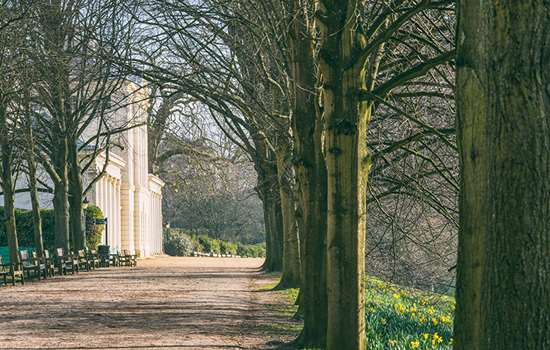
VISIT KENWOOD
Kenwood’s breathtaking interiors, world-class art collections and glorious parkland on the edge of Hampstead Heath are free for everyone to enjoy.
-
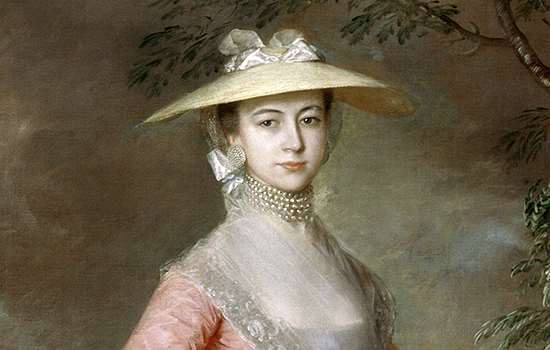
Kenwood Collection Highlights
Explore the gems of the Iveagh Bequest plus a selection of the other works that make up the internationally renowned collection at Kenwood.
-

The Iveagh Bequest
The paintings displayed on the ground floor at Kenwood were bequeathed by Lord Iveagh in 1927. Find out about the collection and the man behind it.
-
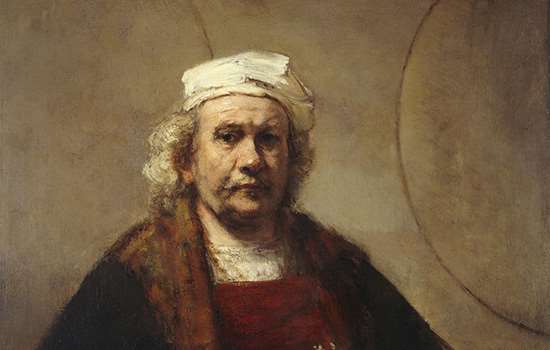
Rembrandt’s self-portrait with two circles
Learn about the historical and artistic significance of one of the finest Rembrandt self-portraits, now a highlight of the Kenwood collection.
-
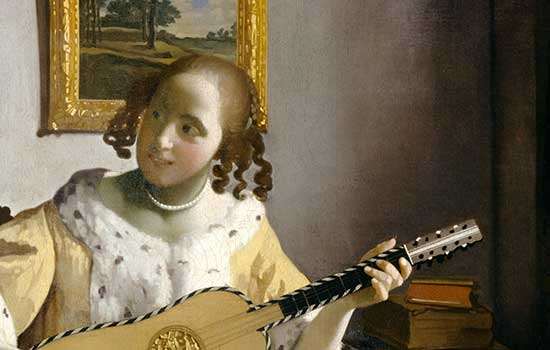
THE GUITAR PLAYER
Discover the story of The Guitar Player, one of only 37 known paintings by Johannes Vermeer.
-
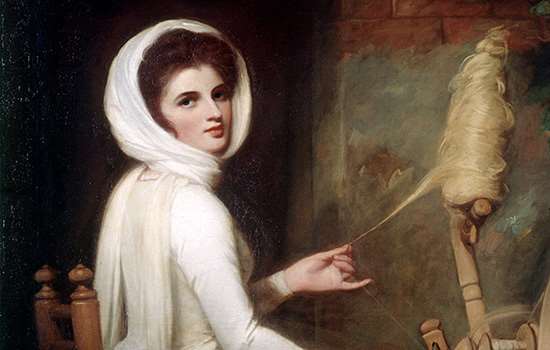
Emma Hamilton, Artist’s Muse
Discover how George Romney’s portraits of Emma Hamilton, including The Spinstress, propelled its subject to fame.
-
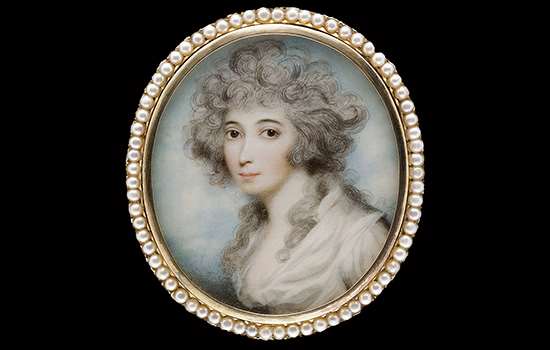
MINIATURES, JEWELLERY AND SHOE BUCKLES
Kenwood is home to three distinct collections of small, portable Georgian treasures that reveal the skills of 18th-century artists and craftspeople.
-
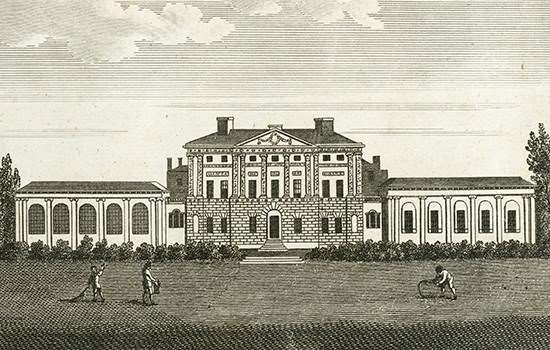
History of Kenwood
Discover the history of Kenwood House from its origins in the early 17th century to its place today as the home of a world-class art collection.
